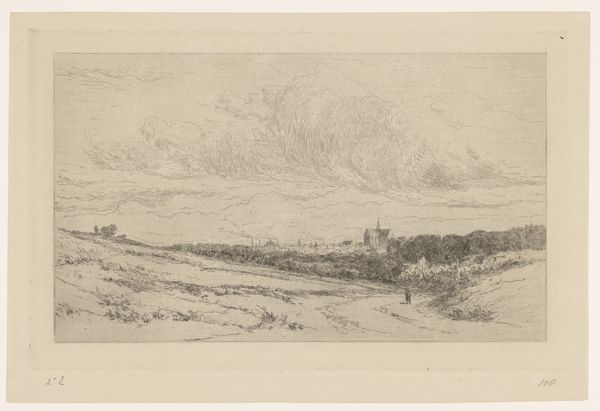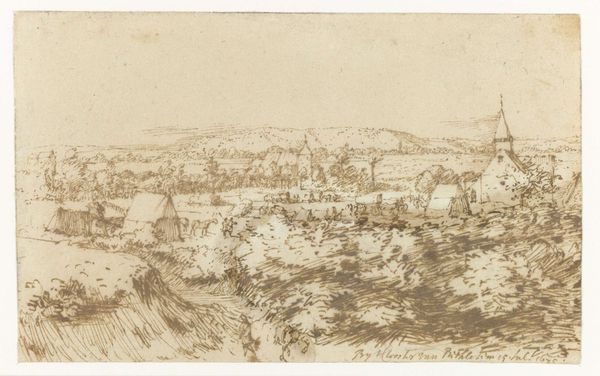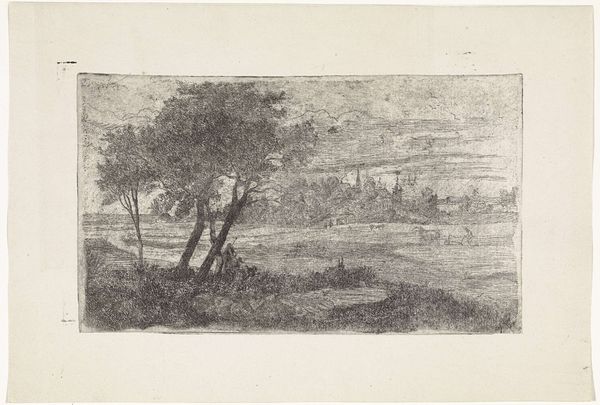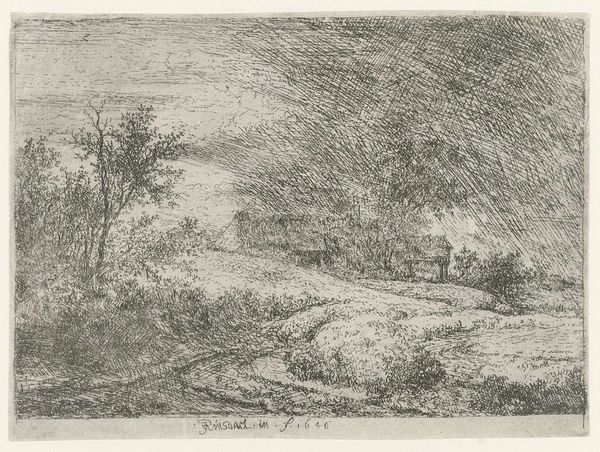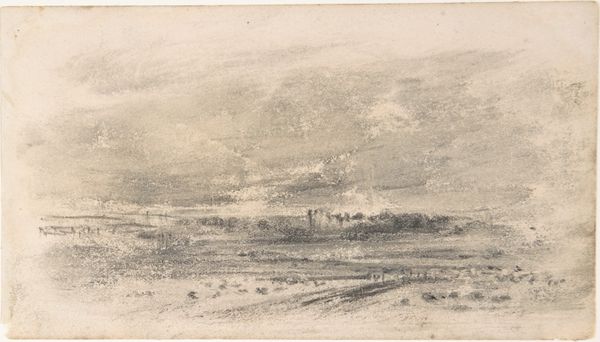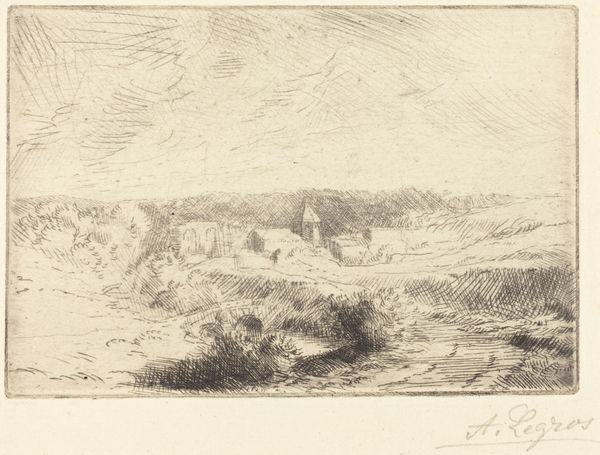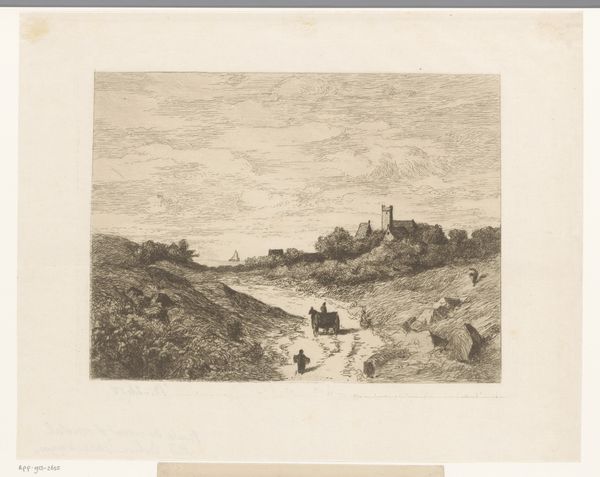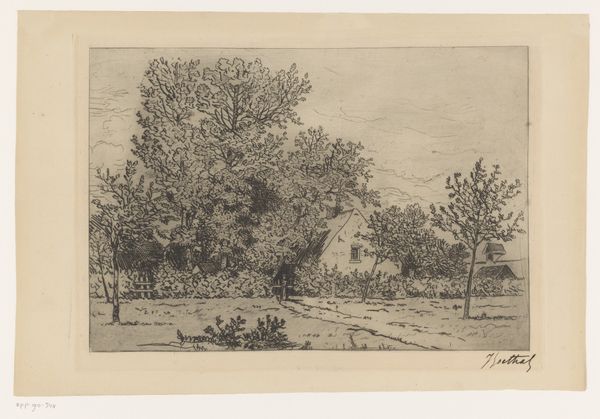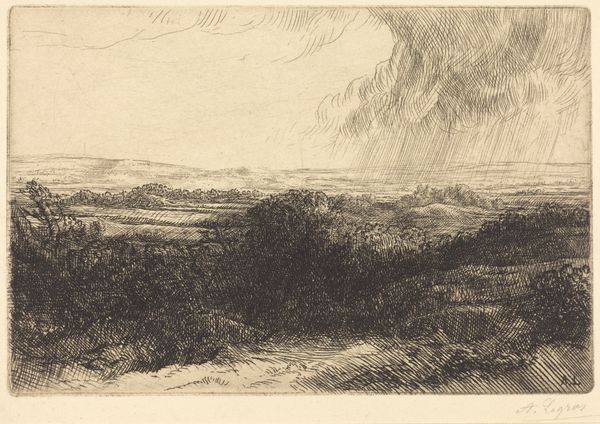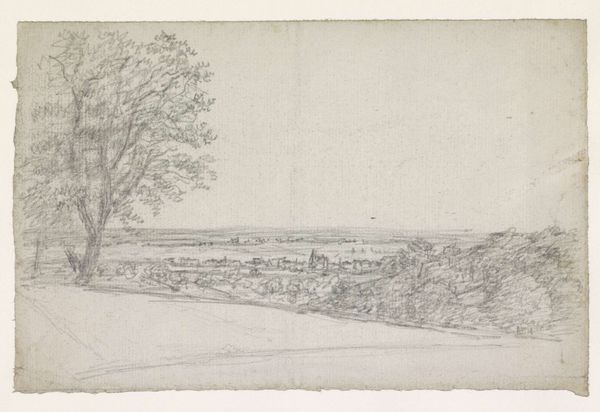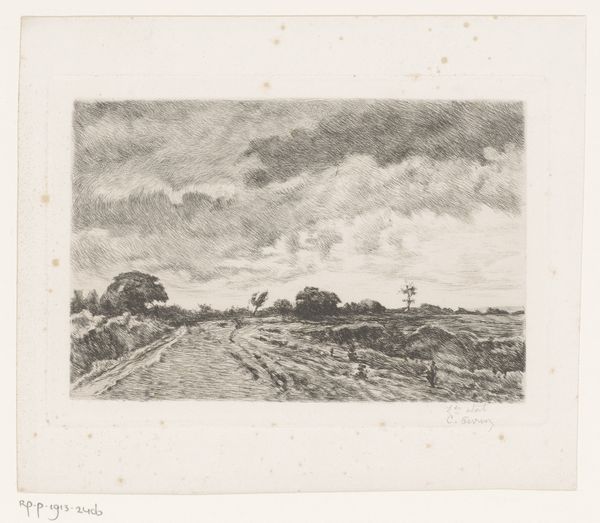
Dimensions: height 109 mm, width 152 mm
Copyright: Rijks Museum: Open Domain
Alexander Schaepkens created this etching, "Landschap met enkele huizen," which translates to "Landscape with some houses," in the 19th century. It presents a seemingly simple scene, but it also encapsulates the socio-economic realities of the Netherlands at that time. The image reveals a stark contrast between the serene rural setting and the subtle signs of human activity, such as the houses and figures. Schaepkens made this in a period of significant social change, as the country was grappling with industrialization and urbanization. The print romanticizes rural life, but the presence of buildings hints at the encroachment of modern society on traditional ways of life. The etching's small size also speaks to its function within the art market; it was more than likely intended for a middle-class audience with an appreciation for landscape art. To understand this piece better, a historian might explore 19th-century Dutch landscape painting, looking for the social conditions that shaped its artistic production. Through this, we can start to grasp the meaning of art as something that is deeply rooted in its social and institutional context.
Comments
No comments
Be the first to comment and join the conversation on the ultimate creative platform.
